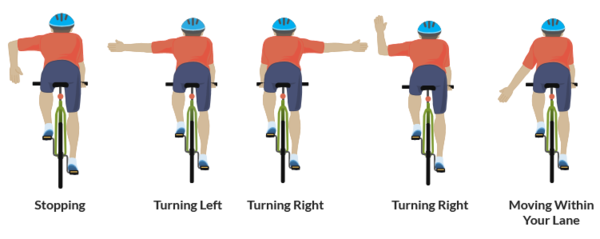What always struck me in Korea was the general failure to use blinkers appropriately, if at all. In best case scenarios, cars and scooters turn on their blinkers just a meter before their turn. Blinkers aren't a formality or a courtesy, they are a way to alert everyone of your intentions — slowing down, turning, and switching lanes. According to a study by the Society of Automotive Engineers (SAE), drivers who fail to use their turn signals account for two million accidents in America, which is twice as much as those caused by distracted driving. A conclusion that miscommunication leads to more crashes than lack of awareness alone is begging to be made. The case is even more dangerous when cyclists and kickboarders are involved.
Bicycle riders and kickboarders seem to share the advantage of being able to move on roads and walkways as much as they please — not only do they place pedestrians in danger of collisions of 20 km/h or faster with metal "pipes", but they also put their own lives at risk of crashing with racing multi-ton iron horses. The general rule of thumb for drivers is to be wary of cyclists, as they can change their trajectory at any moment. However, this doesn't free cyclists or kickboard riders of responsibility, as a technical speed limit of 25 km/h would not protect them. Sure, 25 km/h seems relatively slow, but knowing that an average human runs at 24 km/h, running full speed into a van doesn't sound all that safe, let alone tripping and sliding on concrete.
Straight line trajectory is predictable and typically safe; turning, overtaking, and slowing down are not. Drivers use blinkers, but what can riders do? Cyclists have long ago developed a system of signals:
1. Point either arm towards the direction you are turning;
2. Point one arm down with your palm exposed to signal that you are slowing down;
3. Overtake from the left if your country drives on the right side of the road, and vice versa.

These signals are incredibly simple and intuitive, yet they are not widely used. Kickboard and bicycle accidents happen all the time on school campuses. Helmets and speed limits, although reasonable, are only effective in case a crash actually occurs; they only reduce the damage that may be done to you but cannot prevent the accident altogether. Prevention only starts with communication — to be alert and aware of other drivers.
Unlike the running-into-a-wall example, real-world scenarios often involve other people. Having no regard for your own health can be considered a right — even then, you would cause stress to those who care — but hurting others in that process isn’t. It doesn't matter who is legally obliged to pay for your hospital bills or car repair; both the victim and the perpetrator suffer. Safe driving is not a recommendation; it's rather an obligation that everyone should follow in order for traffic to work. For you, it may be a quick little shortcut, a little spike of adrenaline, even an opportunity to look "cool", but there is nothing quick, fun, nor appealing about breaking the circuit of safety. It's not a perfect world, of course, but it can still be good — so please, at least use your blinkers or arms.

